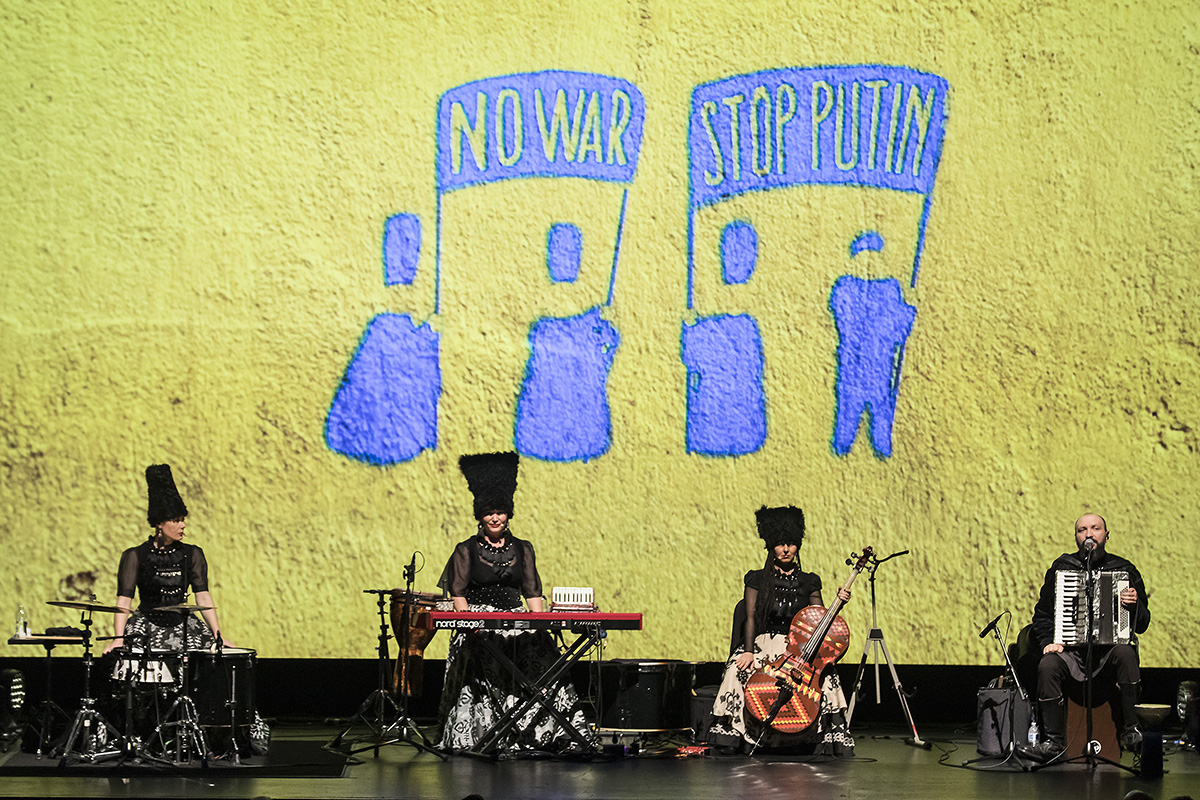DakhaBrakha’s Ukrainian Call to Music Charges Santa Barbara’s Granada Theatre
Group Brought Its Unique Sound and Political Messaging

Last Thursday evening, the 1200 block of State Street was duly, and inspiringly, turned into a Ukrainian culture zone. Of course, the centerpiece of the attention was the eagerly awaited arrival of the Ukrainian sensation DakhaBrakha. The utterly unique group from Kyiv conveys sound made up of unequal parts Ukrainian folk and pop traditions, with plenty of experimental, ambient, and even avant-garde inklings in the blend.

But wait — there was more. An ambitious Ukrainian mini-festival, organized by retired A&L programmer Roman Baratiak — a longtime Santa Barbaran with Ukrainian roots — unfolded on the pedestrian-only street area outside the Granada prior to the big show, with dance by the Ukrainian Arts Center of Southern California and banura player Siuzanna Iglidan.
On the Granada stage, as A&L director Celesta Billeci explained that they had tried twice before to bring the group to Santa Barbara, making this the charmed third attempt. In this historic and tragic moment, the Russia/Putin-embattled Ukraine is in the world’s hearts and minds, making the group all the more popular, and all the more moving in both ambassadorial and protest modes.
This is not just a so-called “world music” phenom anymore. This is wartime, and music is deployed as a genuine channeler of solidarity and awareness. Mixed in with Thursday’s music, ever-shifting visuals onscreen both added an extra-sensory element and broadcast such messages as “RUSSIA IS A TERRORIST STATE,” “ARM UKRAINE NOW,” and the recurring “home screen” adage “NO WAR/STOP PUTIN.”
DakhaBrakha, founded by theater director Vladyslav Troitsky in 2004 and steadily gaining audiences around the world, beguiled at the Granada, from top to bottom. Shifting from folkloric sounds to oblique art-pop and what can only be called “atmospherica,” the group features Marko Halanevych, vocalist and player of multiple western and indigenous Ukrainian instruments, and the vital female trio of Iryna Kovalenko, Olena Tsybulska, and Nina Garenetska, supplier of entrancing vocal harmonies and holding down the “rhythm section” function of drums, cello (doubling as bass), and occasional keyboards. A taut and intuitive rapport is clearly in check by now, many years and albums into the story.
For an encore, the band dove into an exotic blues riff-y song, but in an odd meter and that certain Ukrainian ambience. Halanevych’s eerie falsetto lead vocal, swaddled in the mesh of mystical female vocal harmonies, evoked Curtis Mayfield or Sigur Rós singer Jón Þór “Jónsi” Birgisson, but in a mode that was clearly all about DakhaBrakha. Let’s hope we can soon experience this music in the light of peacetime.
Support the Santa Barbara Independent through a long-term or a single contribution.












You must be logged in to post a comment.